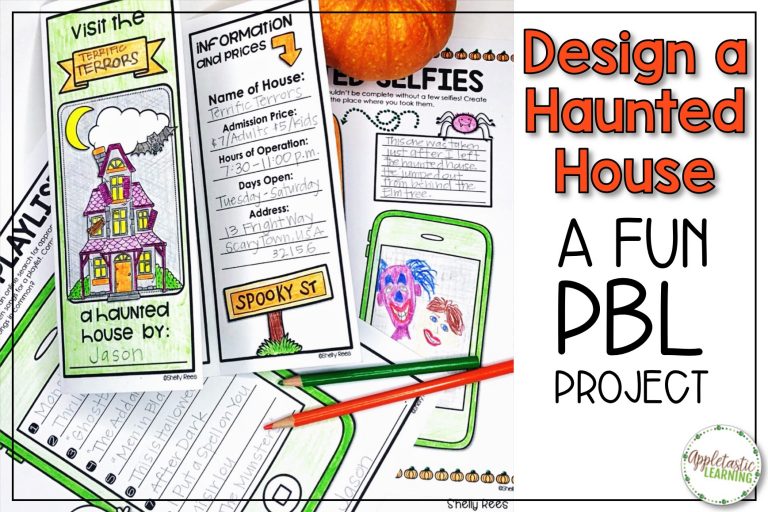
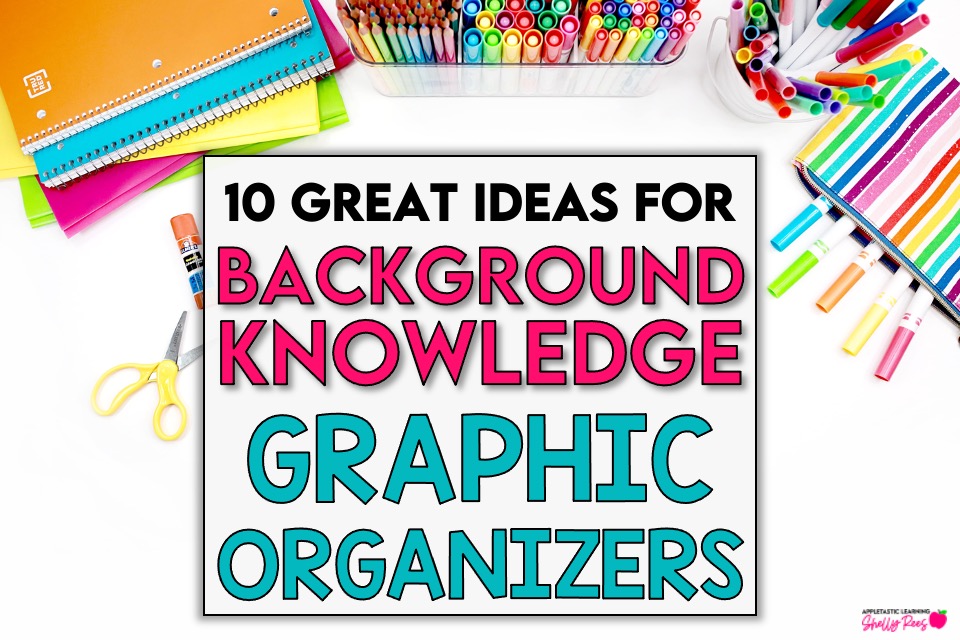

Using a background knowledge graphic organizer can be so helpful to teachers and students alike! Are you ready to transform your upper elementary classroom into a hub of active learning and knowledge retention? Graphic organizers are the secret sauce to making education not just informative but engaging too! In this blog post, we’re diving headfirst into a variety of 10 graphic organizers that will empower you to unlock your students’ potential, helping them grasp essential background knowledge in a fun and interactive way.
Say goodbye to dry lectures and hello to creative, hands-on tools that will captivate your students while reinforcing their understanding of various subjects. So, grab your markers, flipchart paper, latest background knowledge graphic organizer, or digital devices, and let’s explore these game-changing tools that will breathe new life into your teaching methods. Your upper elementary classroom is about to get a makeover – let’s get started!
1.KWL Chart: Use this classic chart to track what students Know, Want to know, and have Learned about a subject. Start with “What do you already know?” and then continue with “What would you like to know?” Use the “What have you learned?” column as a follow-up. Get a printable KWL chart in the complete ready-to-go Background Knowledge Graphic Organizers Packet.
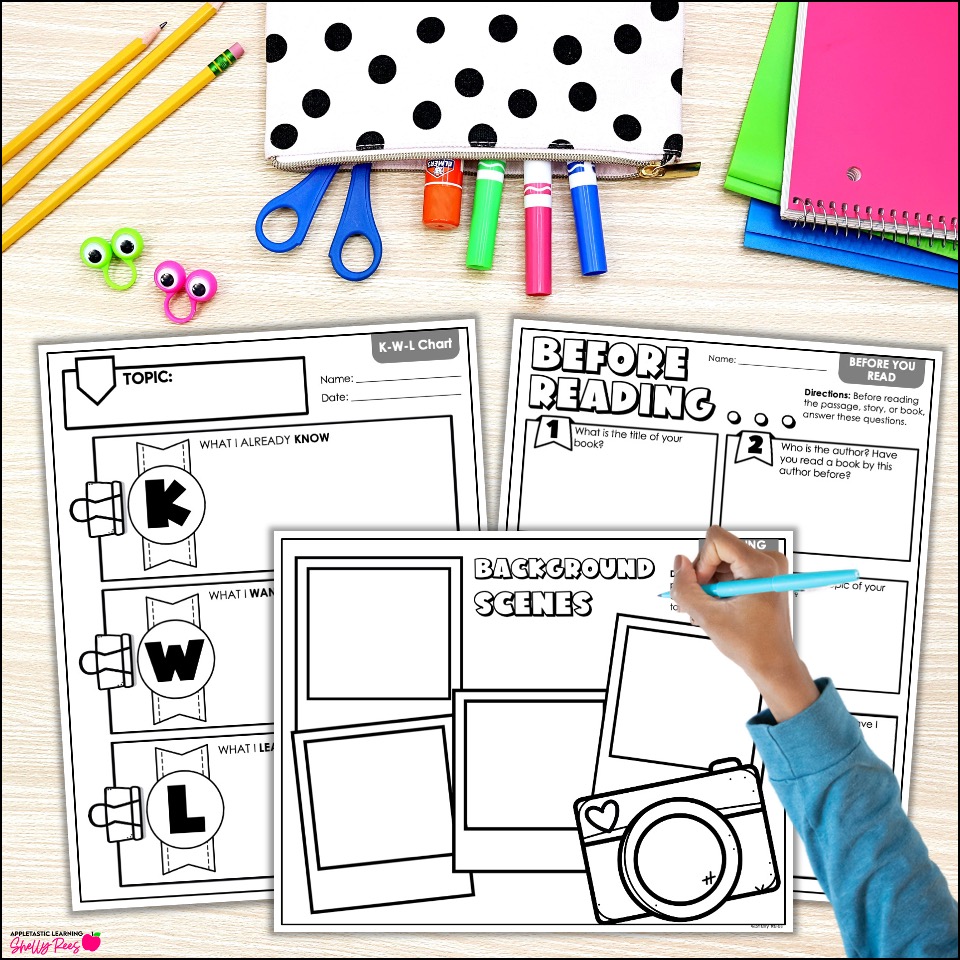
2. Mind Map: Create a mind map centered around a main topic. Add branches for subtopics, related concepts, and key details. This background knowledge graphic organizer can be great for brainstorming before diving deeper into a subject.
3. Venn Diagram: Teach students how to compare and contrast by filling in the overlapping circles with similarities and the separate sections with differences. Perfect for exploring two related concepts or ideas!
4. Timeline: Have students create a chronological timeline of important events related to a historical period or a main events from a novel. This background knowledge graphic organizer helps in visualizing the sequence of events.
5. Cause and Effect Chart: Illustrate the cause-and-effect relationships in a historical event, story, or scientific process. Students can connect the causes on one side and their effects on the other.
6. T-Chart: Use a T-Chart to list pros and cons, advantages and disadvantages, or any two opposing viewpoints on a subject. It’s excellent for debates and discussions.
7. Concept Web: Encourage students to brainstorm concepts related to a central theme and connect them with lines. This can help them see how ideas are interconnected. The knowledge web shown below is a part of the complete Background Knowledge Graphic Organizers Packet.

8. Character Analysis Map: For story or novel studies, create a character map with details about a character’s traits, actions, and motivations. This background knowledge graphic organizer is useful for understanding character development.
9. Background Scenes: Before reading a passage or learning about a topic, have students draw and color things they already know about that topic. This is a great background knowledge graphic organizer idea for students who express themselves well through art. Get a ready-made Background Scenes printable in the complete Graphic Organizer Packet.
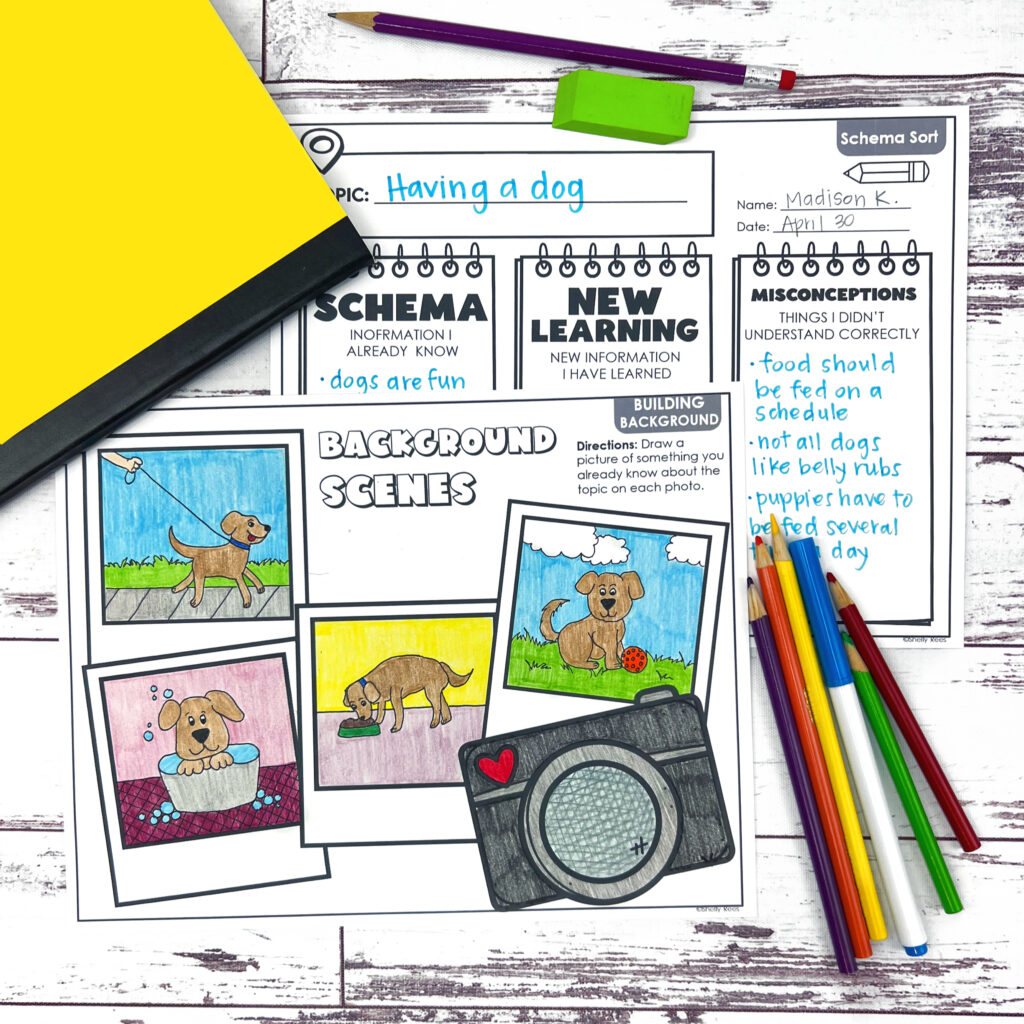
10. Frayer Model: Develop vocabulary and concept understanding by filling in a chart with a term in the center. Students can include the term’s definition, characteristics, examples, and non-examples.
11. Pie Chart Organizer: A Pie Chart Organizer is a visual representation that resembles a pie, with each slice representing a different aspect of a topic. This organizer is perfect for showcasing the distribution or composition of various elements within a whole, allowing students to see the relative importance of each component in a visually appealing way.
12. Schema Sort: This background knowledge graphic organizer is helpful when approaching any new topic! Divide a paper into three columns: Schema (Information I already know), New Learning (New information I have learned), and Misconceptions (Things I didn’t understand correctly). Have students add information to each column as you progress through a lesson on the topic. Share and discuss as a whole class.
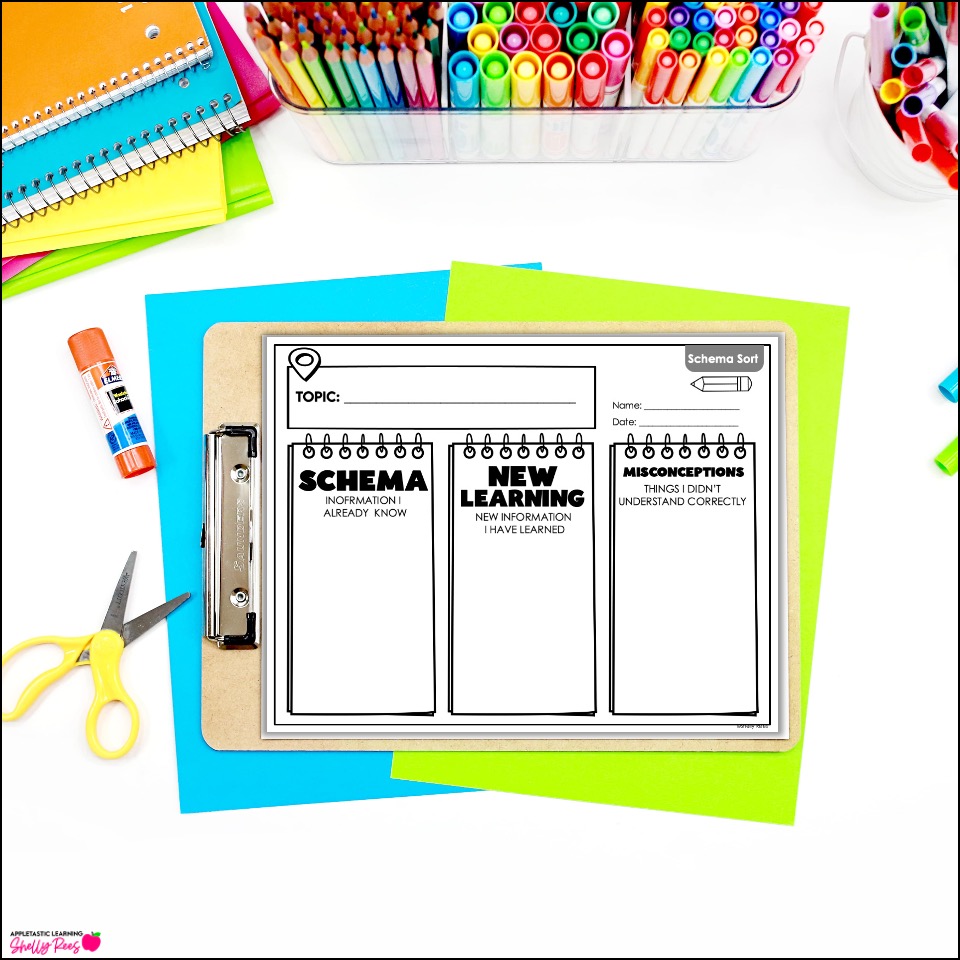
13. Concept Comparison Chart: This chart is ideal for comparing and contrasting multiple concepts or ideas. Students create columns for different concepts and rows for specific attributes or criteria. By filling in the cells, they can highlight the similarities and differences, helping them understand the nuances between related topics.
14. Mindset Map: A Mindset Map is used to explore different mindsets or perspectives associated with a particular issue or topic. Students identify various stances they may have and describe their thoughts on the topic. This background knowledge graphic organizer is great for critical thinking.
15. Interactive Notebook: The Interactive Notebook is a versatile organizer where students create a personal, hands-on resource for a specific unit of study. It includes various elements like foldable flaps, pockets for flashcards, mini booklets, and interactive charts. This organizer allows students to record, organize, and review information in a tactile and engaging manner.
These 15 graphic organizers aren’t just tools; they are gateways to a more dynamic and enriching learning experience for upper elementary students. They encourage exploration, critical thinking, and creativity, all while solidifying foundational knowledge. Here’s to a future of inspired and engaged learners!
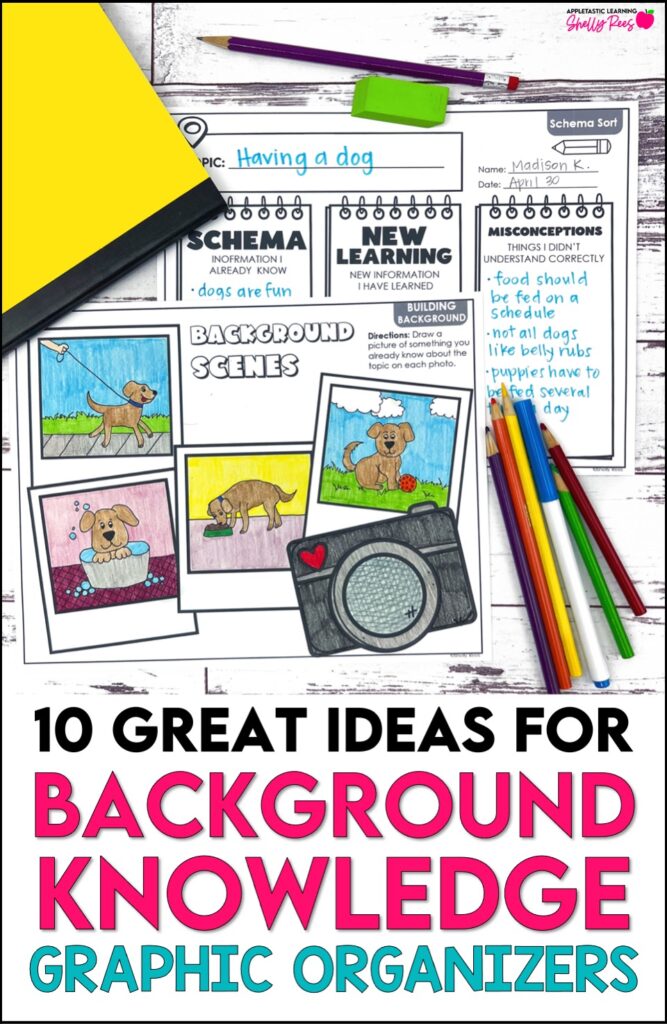

Hi, I’m Shelly! Thank you for being here. I love helping third, fourth, and fifth grade teachers with fun and engaging activities that require no to little prep! Let me help you by taking some of the stress and work off your plate.

©2022 Shelly Rees. All Rights Reserved.